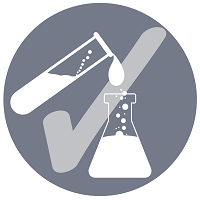Back
Formulation and Delivery – Chemical
Session: Symposium: Recent Development in Prophylactic Therapies and Vaccines (CE)
Maturing Role of Systems Pharmacology, Long-Acting and Targeted Drug-Combination Technologies in Making Health Impact in Long-Acting Therapeutics
Monday, October 17, 2022
9:00 AM – 9:30 AM ET
Location: 205 AB
.jpg)
Rodney J. Ho, Ph.D NAI FAAPS FAAAS
Executive Director and Professor
Center for WE-REACH
Seattle, Washington
Speaker(s)
Long-acting (LA) products are intended for extending pharmacokinetics and therapeutic effects. These LA products are used both in prevention and treatment. They are intended to reduce dosing frequency to improve patient care and retention for chronic therapies. Examples include long-acting injectable for diabetes - insulin-detemir and degludec; GLP1 derivatives - rulaglutide-Fc, semaglutide-SA; for HIV/AIDS - cabotegravir particles (Apretude; with rilpivirine in Cabenuva). Current enabling technologies for long-acting injectable products includes (1) binding or conjugating drugs to bio-molecules of long-plasma half-life such as serum albumin and Fc domain of IgG molecule, (2) liposome (3) polymeric drug encapsulation, (4) lipidic drug conjugates to form micelles at injection site. Many polymeric and lipidic drug carriers provide sustained and controlled release of a single drug at the (IM or SC) injection site, extending drug levels over time in plasma. For many chronic diseases and infection such as cancer and HIV/AIDS, 2 or more drugs targeted to 2 or more checkpoints or drug-targets are needed to sustain viral suppression or suppressed metastatic spread of aggressive cancer cells. However, oral fix-dose 2-3 drugs with disparate physical properties must be dosed daily to be in remission; stoppage cause rebound and progression to AIDS. In considering the overall viral-host interactions, drug distributions and exposure, we integrate available systems knowledge to guide best interventional strategies. Our first attempt was to define drug exposure in lymphocytes within lymph nodes (where residual but drug sensitive HIV persist). We found and were the first to report that limited HIV drug exposure in HIV host cells in human lymph nodes at levels much lower than plasma or blood. To overcome lymph-drug-insufficiency, University of Washington TLC-ART program has successfully created a novel DcNP platform technology which enable co-assembly of multiple-drugs into a drug-combination-nanoparticles (DcNP). Subcutaneous administration of a single-dose of TLC-ART 101 containing lopinavir, ritonavir and tenofovir (which exhibit disparate physical properties that limit existing formulation technologies to assemble them as all in one nanoparticle) in DcNP formulation in primates resulted in higher lymphocyte-to-plasma drug concentrations achieved for all 3 HIV drugs; with extended drug presence over 3-4 weeks. TLC-ART 101 is progressing toward a first-in-human PK study. The DcNP platform enables integration of many current oral HIV drugs with unique but disparate physical-chemical properties, thereby allowing transformation from oral to long-acting injectable dosages. In vivo Stability of DcNP has enabled to enhanced and synchronized co-localization of multiple HIV drugs in cells for achieving maximum pharmacologic actions against HIV infected cells in the body. Other long-acting HIV drug- combinations of global interests are in the work. With support from NIH, Unitaid, public-and-private sources, our TLC-ART team has taken systems approach to develop a drug combination nanoparticulate platform technology targeted to HIV-host and metastatic cancer cells to make health impact. Integrated systems that include clinical pharmacology and toxicology, pharmacokinetics, developmental and regulatory path consideration is necessary in transforming short-acting oral drug combinations into long-acting HIV therapeutics. Supported in part by Unitaid 2020-39-GLAD; NIH grants AI120176; AI 148055; HL152401; AI149665.
Learning Objectives:
- Understand how integrated systems knowledge on disease states and drug target information are leveraged to build Systems Pharmacology in developing long-acting drug products for a range of disease states
- Appreciate the distinctions among drug delivery technologies used to produce extended duration of plasma drug concentrations
- Understand the strengths as well as limitations on single agent long-acting products. Why multi-drug long-acting products are more complex but desirable for chronic therapies
- Develop a timely Systems knowledge base critical to guide and select leads and develop a progression plan that includes biomarkers, success matrices, and quantitative approaches in systems pharmacology in the overall drug development plan.
- Appreciate the need to have an enabling technology to build a long-acting therapeutic product that capable to synchronize the delivery of multiple drugs to target tissues and cells in finding a sustained suppression of HIV and metastatic cancer

